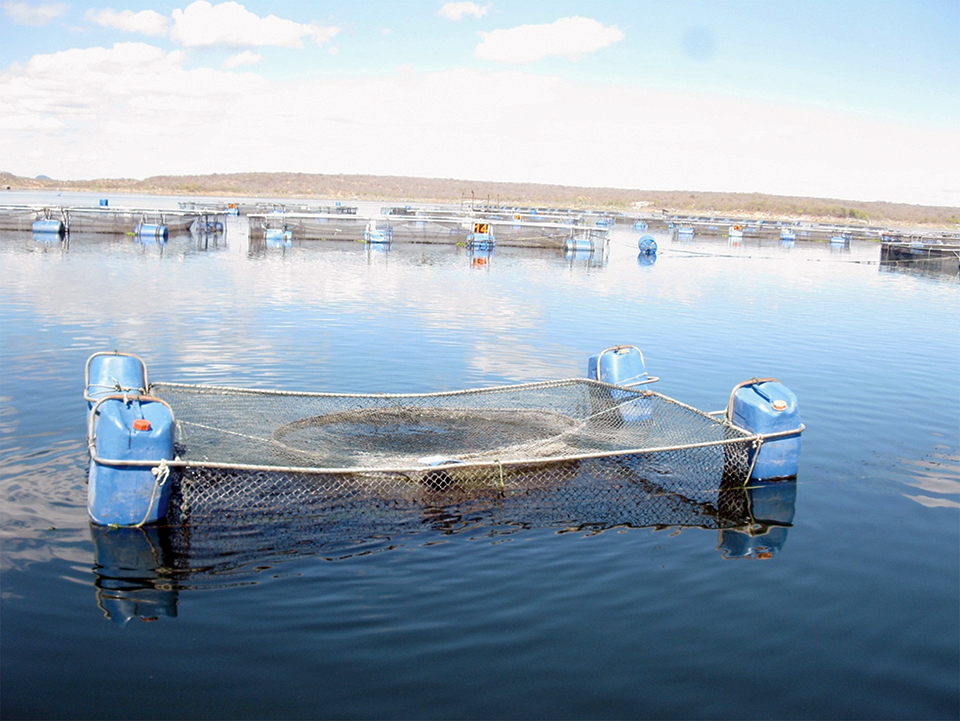Three trials evaluate effects of probiotics on sturgeon

A sturgeon farm in southern Florida, USA, that uses recirculating systems has been affected for many years by recurrent bacterial diseases. All the sturgeon species produced at the farm – Acipenser osetra (Russian or Persian), A. baeri (Siberian), A. naccarii (Adriatic) and a hybrid (Huso huso x A. ruthenus) – have been affected by the diseases.
As part of a management plan for the farm, the authors recently isolated over a dozen bacterial pathogens from diseased fish. The pathogens included Pseudomonas aeruginosa, Coagulase (-) Staphylococcus (g+), Proteus mirabilis, Alphahemolytic (Streptococcus) and Flexibacter columnaris. In most cases, several pathogens were isolated from single animals.
Pathologies present
The fish presented significantly different pathologies. Some animals died with only minor skin discolorations. Other fish showed external wounds characterized by skin hemorrhages; fin erosion; deep wounds that in some cases reached the skeletal structure; swollen, turbid and hemorrhagic eyes; and tumors at the base of the pelvic fins or in the mouth.
Evidence of internal disease was manifested by dark or pale gill lamellae, swelling and hemorrhagic venting, petechiae in body musculature and ulcerative lesions at the abdomen or base of the pectoral, anal and caudal fins. Deterioration of internal organs such as changes in color and swelling of liver, kidney, spleen and gall bladder were common. In some fish, liquefied organs or vesicles embedded in the above organs were observed.
Management recommendations
An integrated approach that included sanitary practices was recommended, as well as removal of organic matter, disinfection of culture systems with 10-ppm chlorine, treatment of incoming water, conditioning with the addition of nitrifiers and weekly rotation of three different commercial bacterial probiotic products. The probiotics are incubated at the farm with formulated nutrients that stimulate massive propagation of the strains and production of active metabolites.
The authors conducted three trials to evaluate the effects of the probiotics at the farm. The incoming water, which contained several pathogens, was not treated in trials 1 and 2.
Trial 1
In the first trial, five independent recirculating systems were used. The organic matter was removed and the systems were disinfected with chlorine. Each recirculating system, composed of eight culture tanks, was stocked with 4,075 fish with an average weight of 1.8 kg. The resulting stocking biomass was 22 kg per cubic meter.
One system was left untreated as a control while the other four systems were treated with probiotics. After 180 days of culture, the control treatment had 27.8 percent mortality, whereas the treated systems did not reach 2.3 percent mortality.
Trial 2
Another trial was carried out in a large recirculating system that could not be cleaned of the accumulated organic matter or disinfected. The system was stocked with 10,888 fish of 5 kg each for an initial stocking biomass of 38 kg per cubic meter.
Over five months, mortalities reached 8.1 percent per month before the system was treated with probiotics. After treatment, mortalities were significantly reduced to 1.9 percent per month. Unfortunately, a valve malfunction released large amounts of water that had to be replaced with nontreated water. Fish mortalities then increased to 3.8 percent, but probiotic treatment again reduced mortalities to 1.2 percent (Fig. 1).

Trial 3
The objective of a third trial was to follow the healing process of external wounds in large fish held in recirculating systems using probiotics. Two independent systems were disinfected and treated with probiotics. Sixteen large fish with external wounds caused by various pathogens that under normal conditions would typically lead to their death within two weeks were stocked in the two systems. Four of the fish had irreversible wounds such as the loss of an eye, but were included to evaluate their survival under probiotic treatment.
The trial was supposed to last for two months, but had to be stopped after 18 days due to lack of space in the production facility. Eleven of the 16 fish had completely recovered from their wounds after this short treatment period. The four fish with irreversible wounds survived the test period, while one fish died.
(Editor’s Note: This article was originally published in the May/June 2008 print edition of the Global Aquaculture Advocate.)
Now that you've reached the end of the article ...
… please consider supporting GSA’s mission to advance responsible seafood practices through education, advocacy and third-party assurances. The Advocate aims to document the evolution of responsible seafood practices and share the expansive knowledge of our vast network of contributors.
By becoming a Global Seafood Alliance member, you’re ensuring that all of the pre-competitive work we do through member benefits, resources and events can continue. Individual membership costs just $50 a year.
Not a GSA member? Join us.
Authors
-
Philippe Douillet, Ph.D.
EcoMicrobials, LLC
2000 Bayshore Drive, Suite 205
Miami, Florida 33137 USA -
Carlos Robinson Orozco, M.S.
EcoMicrobials, LLC
2000 Bayshore Drive, Suite 205
Miami, Florida 33137 USA
Tagged With
Related Posts

Health & Welfare
Artemia bioencapsulation delivers probiotics via digestive tracts of fish larvae
Research with sturgeon and carp species indicated that encapsulated artemia has high potential to carry probiotics or other beneficial microorganisms.

Health & Welfare
Assessment of supplemental Bacillus probiotics in whiteleg shrimp juveniles
Results of a feeding study supplementing probiotics in the diet showed that when the Bacillus species were complemented in an appropriate concentration into feeds, the growth and feed efficiency of whiteleg shrimp could be improved.

Health & Welfare
Bacillus probiotics benefit tilapia rearing under challenging conditions in Brazil
A recent study that evaluated the benefits of using probiotics with a balanced mixture of Bacillus bacteria strains to inhibit pathogenic bacteria in tilapia.

Health & Welfare
A holistic management approach to EMS
Early Mortality Syndrome has devastated farmed shrimp in Asia and Latin America. With better understanding of the pathogen and the development and improvement of novel strategies, shrimp farmers are now able to better manage the disease.


